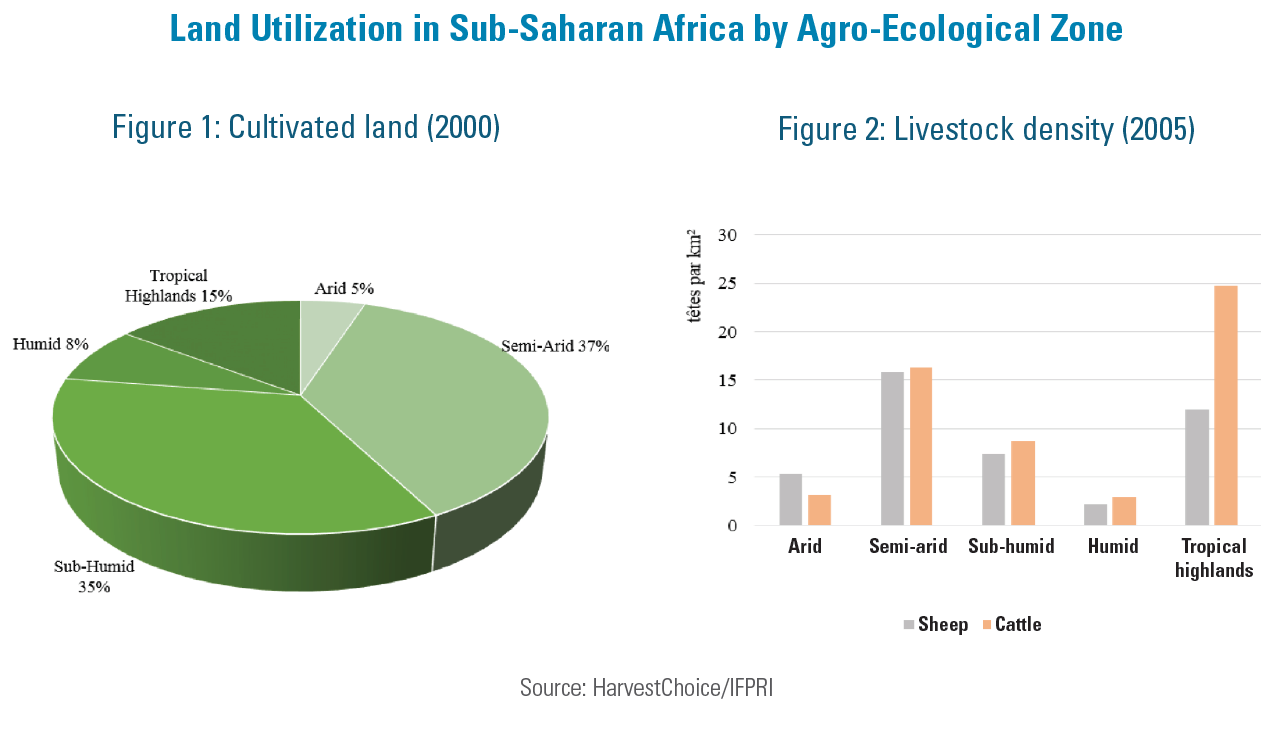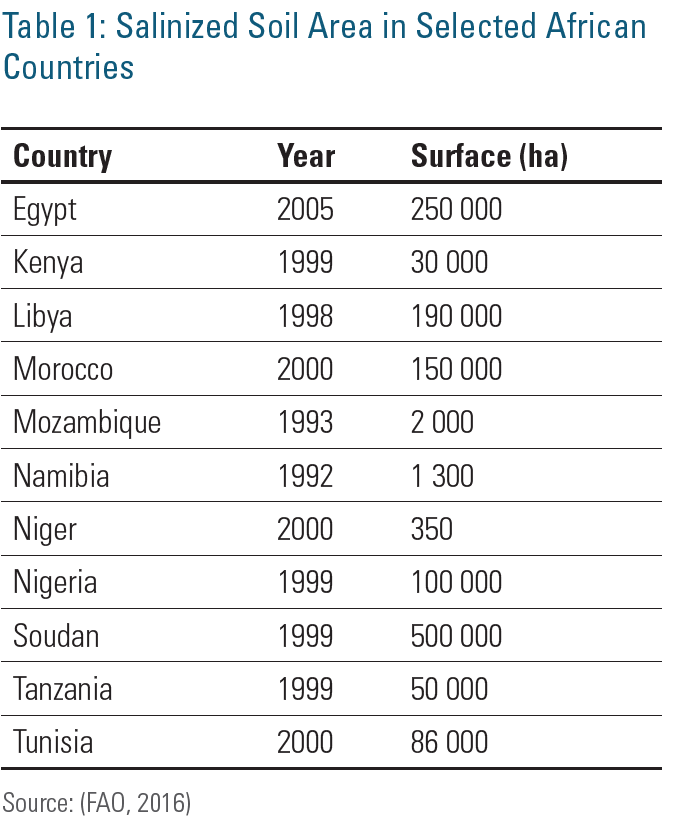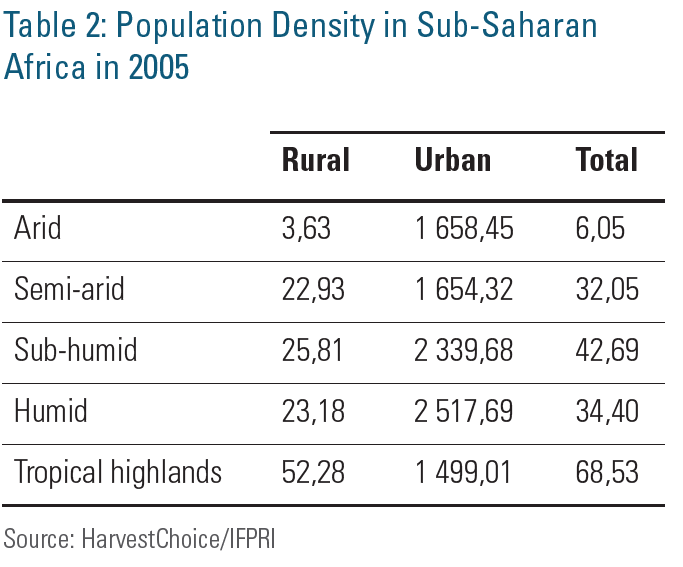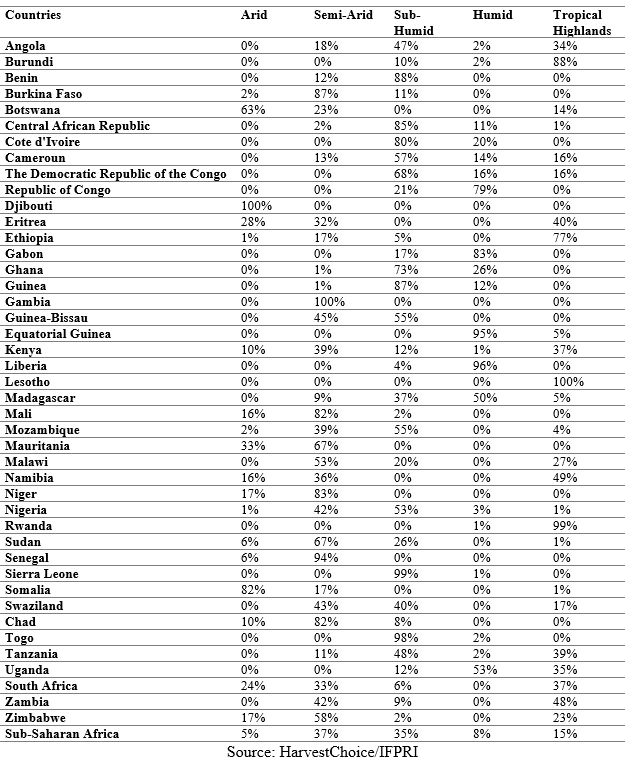Is Land Degradation Neutrality in Africa Possible?
At the heart of this century's top priorities are food security, environmental protection and improving the standard of living. With soaring population growth, strong industrialization exerting pressure on natural resources, and accelerating climate change and desertification, a number of actions are being taken to achieve neutrality in terms of land degradation. Conserving and restoring ecosystems, while making rational use of natural resources to meet the population’s needs are essential. In order to achieve this goal of neutrality by 2050, a series of projects and initiatives at the national and international levels are being carried out in succession and must complement each other.
The Rio+20 conference in June 2012 provided an opportunity for environmental stakeholders to embrace the concept of a world that is neutral in terms of impact on the environment. Enacting Sustainable Development Goals (SDGs) in September 2015 was an opportunity to renew this commitment to enact ecosystem protection. The SDG Target 15.3 to which African policy makers and their peers from other continents have committed, reflects the importance of the subject. To reiterate, it stipulates that by 2030, States undertake to combat desertification, restore degraded lands and soils, including lands affected by desertification, drought and floods, and work towards a world without land degradation.
The United Nations Convention to Combat Desertification (UNCCD) defines Land Degradation Neutrality (LND) as a "state in which the quantity and quality of land resources required to support ecosystem functions and services and improve food security remain stable or increase within defined temporal and spatial scales and given ecosystems" . This Policy Brief aims to highlight the importance of the subject in Africa as well as key factors to successfully attain the land neutrality vision in Africa.
Land degradation in Africa
As stated in SDG target 15.3, the core problem behind the need for neutrality is land degradation, a phenomenon affecting nearly 46% of Africa's land area (Botoni&Subsol, 2013). Land degradation is defined as the loss of land quality and utility for humans and the survival of ecosystems, as a result of often interrelated physicochemical processes such as erosion, salinization, soil clogging, and nutrient loss, deterioration of soil structure or pollution. These processes are natural in nature, but are accelerated by human activities, especially in the absence of regulation.
In addition, poor agricultural and forestry practices (poor management of irrigation, fertilization, mechanization or phytosanitary treatments, overgrazing, deforestation and other excessive harvesting of forest products, bush and forest fires, etc.) are major causes of land degradation. In agriculture, the absence or limited use of fertilizers causes nutrient depletion in soils. This poor practice is even considered as the main cause of degradation of the production environment (Chianu, et al., 2008). Thus, 75% to 80% of the continent's cultivated area is reportedly degraded, with a loss of 30 to 60 kg of nutrients per hectare per year (Roy, 2006). In the year 1990, Dregne already warned that African soils had lost 20% of their fertility relative to 1950’s levels.
In arid, semi-arid and dry sub-humid areas, land degradation accelerates the aridification of the environment and the creation of desert conditions or desertification. According to IFPRI data, the first two zones classifications represent more than 40% of cultivated areas in sub-Saharan Africa, respectively 5% for arid zones and 37% for semi-arid zones (see Figure 1). In eight sub-Saharan countries (Gambia, Senegal, Burkina Faso, Chad, Niger, Mali, Djibouti, Somalia and Senegal), arid and semi-arid areas are estimated to represent more than three-quarters of cultivated surface. These also account for the total cultivated area in five countries (Djibouti, Gambia, Mauritania, Niger and Senegal - see Table 3).
Losses due to desertification were estimated at $476 million for irrigated land, $1,857 million for rain-fed land and $6,966 million for rangelands, for a total of $9,299 million for about 1,046 million hectares of degraded land. Rehabilitation of this land would require no less than $37,387 billion (Dregne, 1990). More recently, the latest report of the Economic Commission for Africa on drought and desertification in Africa indicates that at least 485 million people or 65% of Africa's population are impacted by the phenomenon (ELD Initiative & UNEP, 2015).

Land degradation in arid, semi-arid and dry sub-humid areas is mainly due to erosion and salinization, both of which are exacerbated by poor agricultural practices (in particular poor management of irrigation and fertilization). In Senegal, for example, land degradation affects 64% of arable land with 74% of this degradation being caused by erosion and the rest by salinization (Panagos, Borrelli, &Ballabio, 2017). In Sudan, due to arid climate and poor irrigation, more than 500,000 ha of soil are affected by salinization (see Table 1). The situation in North Africa appears to be deteriorating, with more than 150,000 ha of salinized land in Morocco, Libya and Egypt (FAO, 2016).
Poor agricultural practices are also at the root of soil acidification, which generally results from excessive fertilizer use or deforestation. Acidification increases with the duration of land use, especially in ferruginous and ferralitic soils, which are the most prevalently cultivated in sub-Saharan Africa (Feller & al, 1991). In Burkina Faso for instance, it is proven that ferruginous soils become acidified within 6 to 7 years of exploitation. As for ferralitic soils, acidity can be observed after only 4 years of exploitation (Dakouo, 1991). Another study in Gabon also showed that Libreville soils grown for more than 10 years are acidified with a significant decrease in fertility (Ondo, 2011).

Desertification is also closely linked to global warming. On the one hand, the loss of vegetative canopy reduces carbon sequestration capacity and increases the albedo of the Earth's surface. As such, forest areas in Africa declined from 705 million hectares to 624 million hectares, according to data published by FAO. On the other hand, global warming contributes to soil aridification, loss of vegetation cover, forest fires and erosion in all its forms (Sinsin, 2018). Overall, it is estimated that land degradation and desertification contribute up to 30% of global greenhouse gas emissions by reducing vegetative CO2 uptake .
In wetter areas (sub-humid, humid and tropical highlands), estimated to represent about 58% of cultivated land in Africa, land degradation is different. Sub-humid to wet bioclimate areas receive significant precipitation that causes erosion and flooding, especially when soilsare bare (low vegetation cover). Water erosion is particularly prevalent in Central and West Africa where annual erosion rates are very high (Panagos, Borrelli, &Ballabio, 2017).
In addition, these areas are subject to greater anthropogenic pressure - reflected in population density (see Table 2) - due in part to the abundant vegetation cover and fertile soils that attract farmers, pastoralists and silviculturists. In the absence of regulation, the latter tend to overexploit the land, thus accentuating its degradation. Urban expansion causes loss of arable land and reduces its availability. Depending on a country's arable land potential, these losses may in turn exacerbate overexploitation of remaining available land.

Land degradation thus raises socio-economic and security issues. It should be recalled that in Africa, nearly 70% of the population and 80% of the rural and/or populations depend on agriculture and rural non-farm businesses for their livelihoods (AfDB, 2016). By reducing the productive capacity of soils, land degradation contributes to increased poverty and food insecurity. In countries in the Sahel, land degradation is estimated to lead to a decline in agricultural production of nearly 3% per year, seriously compromising food security in light of high population growth (UNCCD, 2016). Without an appropriate response, this situation can lead to famine, social instability and even conflict in the long term. Land degradation is also at the root of migration, which is a form of adaptation to the phenomenon of climate change and natural disasters (AfDB, 2014). Nevertheless, the displacement of populations to non- or slightly threatened areas leads to an increase in pressure in these areas (Benguerai, 2011).
Although some have called for these effects to be put into perspective, given the continent's potential (Braban, 1992) , the causes of the phenomenon remain in place. In addition, considering the socio-economic challenges facing Africa, particularly in meeting the needs of a rapidly growing population, human pressure on natural resources will only grow more intense. The need for an appropriate policy response is therefore undeniable and urgent for the development of African lands in economically and ecologically viable models.
Towards an Appropriate African response
Two broad types of measures contribute to a sustainable response to land degradation and neutrality: measures to avoid or reduce degradation and measures to reverse the trend on already degraded land. Combining these two types of measures to offset losses with gains would result in a situation where healthy and productive land no longer suffers any net loss (Orr, et al., 2017). There is no shortage of projects in Africa to implement these measures, both nationally and transnationally.
Overall, these projects focus on sustainable land management and, therefore, on improving the condition and resilience of ecosystems, using different approaches to avoid, reduce or reverse degradation. They also aim to stimulate economic development in areas of intervention, by promoting income-generating and employment-generating activities in sustainable production and the development of goods and services from agriculture and forestry. This dual vision is supported by the need to improve people's living standards and resilience, while protecting investments made (planted trees, restored land, etc.) from further degradation. Success stories have shown that involving people in the implementation of such projects is a necessary condition for success and sustainability of results.
Other, no less important conditions also emerge from success stories. In a non-exhaustive way, one can speak of the development of capacities to collect and process information on climate, soil conditions and local socio-economics; institutional cooperation between countries and within countries in support of technical transfers, capitalization on local know-how, adoption of ICT innovations and of course mobilization of financial resources and strengthening human capital.
One project that successfully integrates this pool of objectives and necessary conditions is the Great Green Wall of the Sahara and Sahel initiative launched in 2007 by the African Union. The idea is to form a 15 km wide strip of greenery crossing the continent from Dakar to Djibouti, to slow down desertification and provide a favorable environment for the development of income-generating activities. In practice, this means a myriad of agricultural and forestry projects within and between countries involved, that have made significant progress but still face significant challenges.
Figure 3: Layout of the Great Green Wall

Source: National Geographic
Mobilizing Innovative Resources
The major difficulty encountered in Africa by the various projects for environmental protection and combating the horrors of climate change and desertification is access to resources, whether human (know-how) or financial. The most recent of the major initiatives attempting to address this situation is the so-called Triple A (Adaptation of African Agriculture) initiative, launched at COP22. It aims to reduce the vulnerability of African agriculture to climate change through capacity building for better water and soil management and for an optimal use of new techniques and technologies. The Triple A initiative also aims to promote access to financing for agricultural development projects in Africa and monitor the allocation of these funds. Thus, mobilizing resources and building effective partnerships are an integral part of the strategic objectives of this initiative. The final part of specific objectives of the Triple A initiative is to facilitate eligibility of agricultural projects under the various criteria imposed for access to climate funds.
Indeed, the processes of accreditation, approval and financing of projects are cumbersome and difficult for African institutions that lack effective support and information to be eligible (Huhtala, Bird, &Herweijer, 2013). The Green Climate Fund, which complements existing sources of climate finance (the Global Environment Facility, the Climate Investment Facility and the Adaptation Fund), is no exception, although a program to support country preparedness was integrated into the Green Climate Fund at its inception.
Despite the fact that there are a number of other associations supporting African organizations in strengthening their access to climate finance, they still face challenges related to accreditation criteria, lack of knowledge of funding sources, governance and management in host African countries. An African Development Bank Group report (Ward J., 2012) suggested measures that could be taken by the Green Climate Fund Board and actions that African governments can take, as well as ways in which the AfDB can facilitate financing opportunities for "green" projects .
Table 3: Distribution of Cultivated Area by Agro-Ecological Zone (2000)











